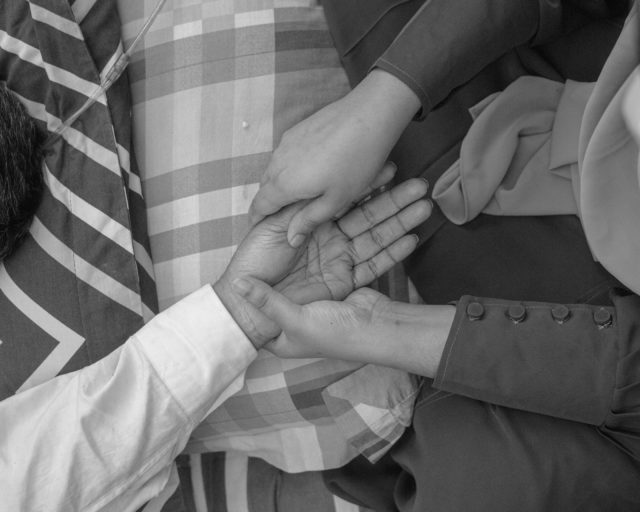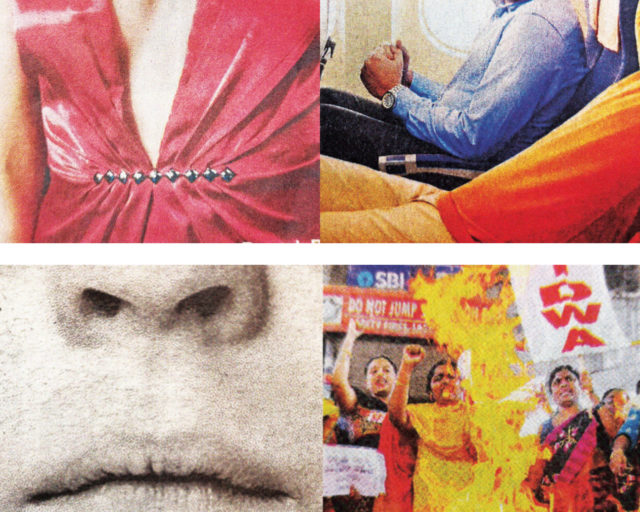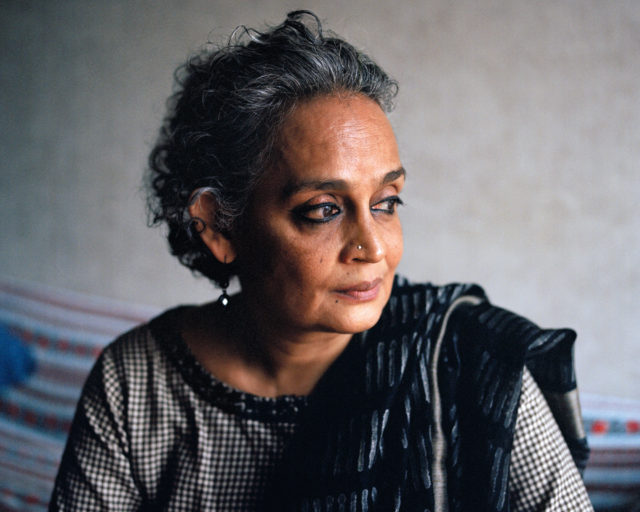The New Era of South Asian Photography Festivals
Amid a pandemic and political crises, three festivals rethink their format—and chart a new path for arts communities in Bangladesh, India, and Nepal.
Prasiit Sthapiit, Tara and her mother Ramkali Kadka, Pokhari, Rukum (detail), 2019. The artist's work was featured in Photo Kathmandu, 2020
Courtesy the artist
On February 12, 2021, Chobi Mela, a biennial photography festival in Dhaka, Bangladesh, launched its Shunno or Zero edition. The statement accompanying the title read that it “raises essential questions about its own purpose.” Mounted amid a global pandemic, via this “self-reflective edition,” the festival asked a pertinent question: “Is art in any way relevant any more to a time of endless loss of life and livelihood?”
Since last year, an invisible force—one that has raged and ravaged through lives and communities—connected individuals across the world. While the manner in which we have been impacted and the protections that we have been afforded have been a reflection, to an extent, of our independent privileges, the virus, at different times, has managed to bring the entire world to a standstill. As I spoke with the founders and directors of three photography festivals in South Asia, a sentiment that emerged was the need to slow down and reflect. In this time of overwhelming personal as well as collective grief, the forced pause on our trajectories has sprouted reckonings—some that had been in a slow churn before and others that responded intuitively to this moment.

Courtesy the artist
Tanzim Wahab of the Bengal Foundation, who took over as Chobi Mela’s festival director from photographer-activist Shahidul Alam in February 2019, spoke to me about this pause, while elaborating on the title for their latest edition. He sees Shunno as a vacuum that is both “philosophical and spiritual,” essential to “restarting from ground zero,” allowing a space to rethink, unlearn, and recalibrate. For the longest-running major photography festival in South Asia, founded in 2000, this would have been its eleventh edition. However, the festival team decided to position it as a bonus edition, one which was “baggage-free” from the expectations that a legacy of two decades may impose on it in a pandemic year. “We just wanted down-to-earth engagement of people, where people can freely experiment with the form, with the medium, and also with their content. Where they can strategize. They can also make some mistakes,” Wahab said, terming this edition “a star in the sky,” one that would “contextualize time” but will not be counted as the eleventh iteration.
This reconfigured thinking about the form of a festival resonated with others in the region. NayanTara Gurung Kakshapati, festival director of the biennial Photo Kathmandu, Nepal’s first and only international photography festival, has been thinking through the relevance of a festival format since its inception. Photo Kathmandu launched in 2015, the year Nepal was struck by a devastating earthquake, and Kakshapati was conscious of the timing of the festival in that critical year, and of the dilemma of spending resources on an arts-based event when over nine thousand Nepalis had lost their lives and thousands of others had their homes destroyed. Kakshapati, along with members of photo.circle, a self-described “platform for photography” based in Kathmandu that she cofounded, were themselves involved in relief efforts in the aftermath of the earthquake. “That year we were also responding to a very specific set of needs,” she told me. At a time when the economy of the country was significantly impacted, especially the tourism sector that sustained many livelihoods, Kakshapati saw the festival as a way to contribute to its rebuilding by attracting visitors and boosting tourism. Five years on, she was once again attuned to the need of the festival to evolve with changing circumstances and realities.
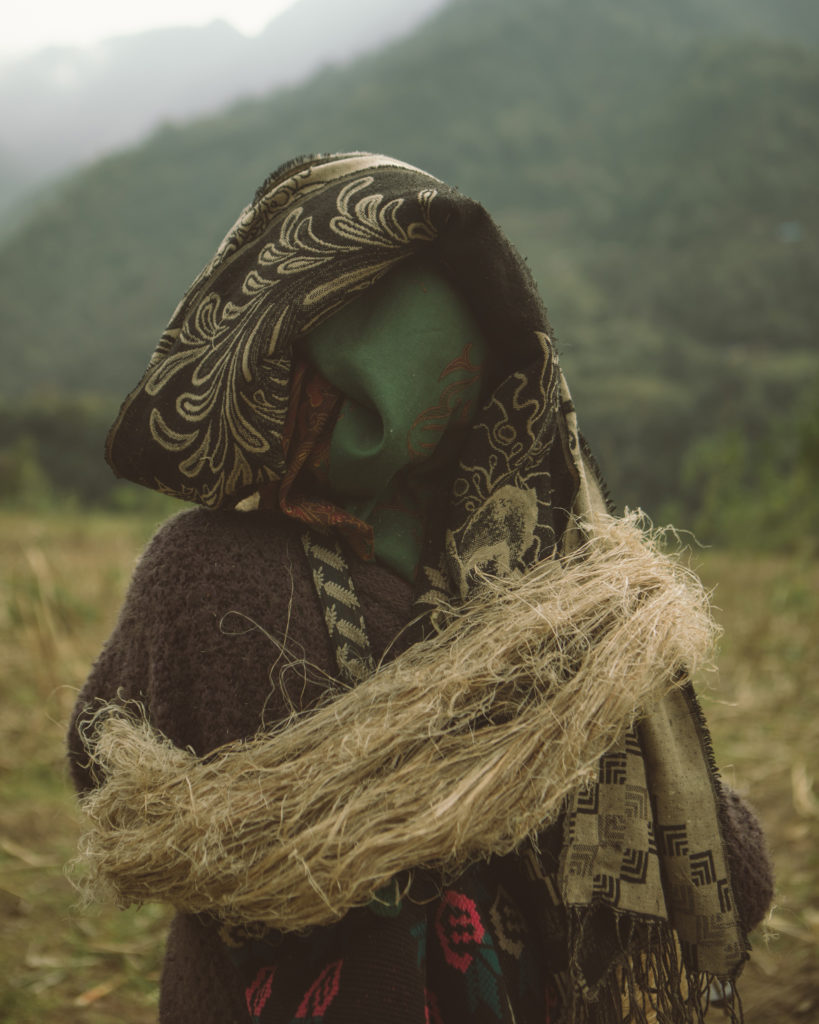
Courtesy the artist
On December 3, 2020, Photo Kathmandu launched its fourth edition, with a week’s lineup of online artist talks and panel discussions, and an informal virtual “mixer”—an online version of Photo Kathmandu’s infamous “speed dating,” in which attendees networked and introduced themselves to others in rapid succession. In the introductory note, Kakshapati, on behalf of the festival team, proposed to shift from the five-week-long festival schedule to a yearlong form. “The festival is part of a larger continuum of image-making, research and civic engagements for us,” Kakshapati wrote, referencing the non-public facing work that photo.circle and Nepal Picture Library (a digital photo archive run by photo.circle) do throughout the year. Reflecting further on this continuum, she posited, “What might be possible if we were to take the resources and energy we commit to a 5-week festival, and stretch it out over a longer period? Would we be able to foster deeper, less frenzied connections and dialogue? This feels like a good time to shift gears and find out.”
This need for deeper engagement is a sentiment that reverberates across festivals, including Chennai Photo Biennale (CPB), a public arts initiative based in Chennai, India. Founded in 2016, CPB was meant to have its third edition in December 2020. Imagined as a “city’s biennale,” CPB intended to follow the lead of its counterparts in Dhaka and Kathmandu in extending beyond traditional exhibition spaces to include, as noted in their mission statement, “public spaces and those parts of Chennai that have remained outside the realm and remit of contemporary cultural activities.” With their heavy focus on engaging the city’s public, and the restrictions the pandemic posed to this endeavor, cofounders Varun Gupta and Shuchi Kapoor spoke about shifting the festival to a later date. With the change in timeline, amid an ongoing pandemic, came a shift in the festival’s imagined shape. “If we’re unable to bring people to the biennale,” Kapoor reflected, “aren’t there ways that the biennale can go to them?” Gupta returned to the emphasis on public spaces, calling it a “biennale without walls,” and referred to some of the sites that have been used for exhibitions in prior editions: “the train station, the park, the beach—these are the places we love to work in. So how do we not lose that?”
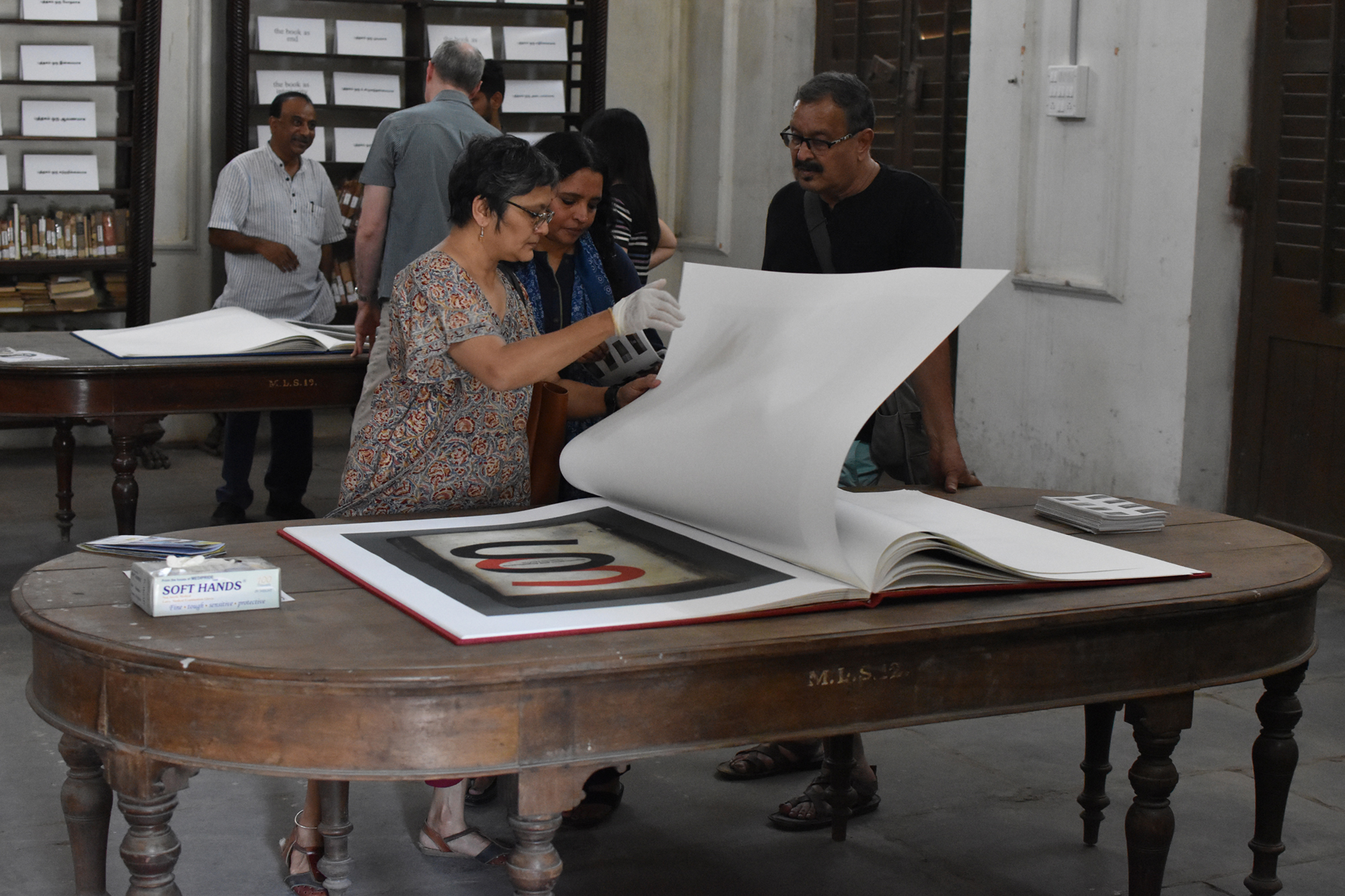
Courtesy the artists
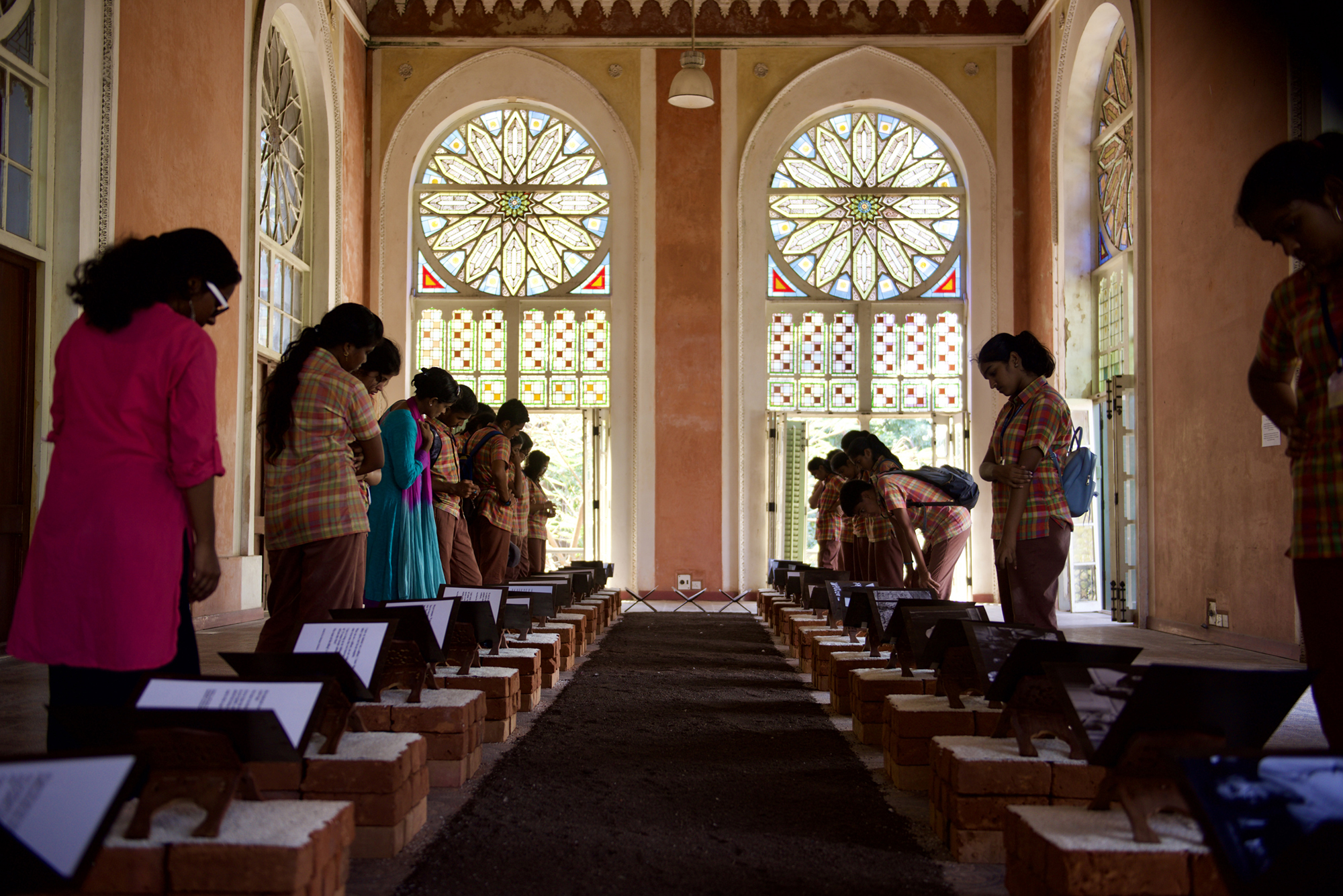
Courtesy CPB Foundation
The pandemic has presented a unique conundrum for these three festivals. While public engagement and building community have been at the core of their missions, the isolation forced by the spread of COVID-19 across the world has meant a complete overhaul in conceptualizing how these engagements take place. Chobi Mela, with its two-decade history of civic engagement with a local audience in Dhaka, has always valued this as much as curating contemporary photography for industry professionals. While previous editions have taken photography to the streets and to local residents, by mounting mobile exhibitions on rickshaws or showing photography in public theaters and libraries in the old city, the pandemic year of 2021 was the first that did not include this in its programming. However, the emphasis on the local was not missing, only remapped. Shunno was a South Asia–specific edition, including works from India, Pakistan, Nepal, and Sri Lanka in addition to the host country, Bangladesh. Many participating artists were alumni of Pathshala, a school for photography in Dhaka recognized as one of the key institutions for photography education in the region (alongside others such as NID in Ahmedabad), and also one of the parent organizations of the festival. “I think we have this fluid network of artists, and we are used to calling it ‘community.’ The community we have built is quite intimate. Intimacy is really important to us,” Wahab said.
Speaking about the festival’s definition of local, Wahab added, “South Asia is our local regional collaborator in every sense.” This cross-pollination was reflected in Chobi Mela’s cultural partnership with Colomboscope, a contemporary art festival based in Sri Lanka, for this year’s edition. “I think we are answerable for this ecology and ecosystem in South Asia. We always try to see how we can share not only ideas but tangible resources,” Wahab told me, “but our resource is also the community itself, idea-sharing and sometimes courage-sharing in a difficult time.”
With the curatorial focus on regional narratives and collaboration, the festival opened its exhibitions in the newly constructed media space DrikPath Bhobon, using not just the gallery, but the stairways, parking lot, and classrooms as innovative sites of display. The building—designed by Bangladeshi architect Bashirul Huq—resembles a film strip and offered Chobi Mela a dynamic venue, one where the works were in constant conversation with the architecture. While the physical edition ran for ten days, the entire site and all the exhibitions in it were converted into a virtual viewing experience, which continued through August 31. In this new avatar, the festival garnered a worldwide audience, bigger than ever before. I asked Wahab if he missed being on the street with the festival. “Of course. But it was intentional, we don’t regret it,” he said, emphasizing that there was no rush to go back to the physical rendition since, being an integral part of the ethos of Chobi Mela, it will inevitably return as part of regular programming post pandemic.

Courtesy Chobi Mela
At their very core, festivals are events that bring people together, and our present circumstances raise many questions about the sustainability of pre-existing formats. Kakshapati, who has been thinking through these questions about the festival form, stressed that each edition should respond to the needs and reality of the community it builds from, as well as the one it serves. She says this adaptation is continuous, “because it is not like the community is a monolithic or permanent entity. It is evolving.” Recognizing the demands—mental, physical, emotional, financial—that the pandemic imposes both on those who attend and host the festival, Photo Kathmandu has laid low after its first week of programming. True to the spirit of malleability that Kakshapati espoused, she said that the festival has somewhat “gone into hibernation,” allowing for a larger reflection on its purpose and position within a broader institutional framework.
The CPB team has also grappled with the unpredictability of the present moment. While Gupta admitted that the pandemic, by disrupting the biennale schedule, opened up room for them to “catch their breath,” up until early 2021, they were moving ahead, as planned, with a largely physical edition of the festival. However, as the second wave of COVID-19 devastated India in April, their plans changed. The team felt a strong impulse to respond to the urgency of the crisis and launched a print sale titled PhotoSolidarity, in which 137 artists came together to sell prints to raise money for COVID relief.
It was at this juncture that CPB decided to pivot the majority of the upcoming festival edition online. Having already shifted their interim year programming online in 2020, and, like Chobi Mela, significantly expanded their audience engagement, they had some preparation for the new venture. However, unlike Chobi Mela, CPB does not plan on converting physical exhibition spaces into virtual reality, but rather intends to build “a virtual exhibit that is purely looking at the art works being presented,” Gupta told me. Kapoor echoes this sentiment, adding, “Not everything that was imagined as physical can be translated into the virtual,” challenging the curatorial team to construct a novel exhibition experience in the digital space. While this idea may cater to professional photography audiences, Gupta and Kapoor continue to stress ways to “travel the festival to the public.” To this end, the curatorial team is working on a broadsheet that can make its way into local neighborhoods as well as across the country, and potentially lead to some “home-spun” shows. The team is also planning an e-journal as a precursor to the latest festival edition, which will preview some works and carry critical texts, podcasts, and interviews, all opening up interpretations of their theme, Maps of Disquiet.
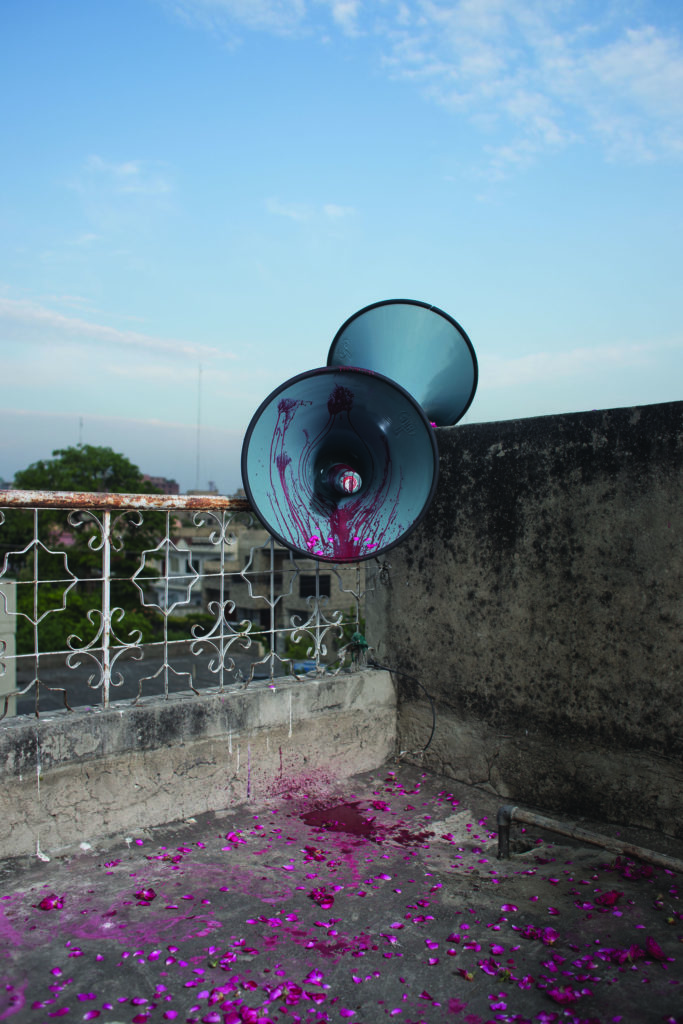
Courtesy the artist
While the pandemic has emerged as the single most consistent disruptor of our lives, it is important to recognize that it has also served as a smoke screen for other injustices that have swiftly been taking place under authoritarian regimes in South Asia, particularly in India and Bangladesh, during this period. As we grapple with the impact of a virus as a “visible” crisis, what is more insidious is the erosion of civil liberties and fundamental rights, especially in vulnerable communities. CPB addresses this directly through their festival theme, and their curatorial statement, with plans to build a collection of lens-based works that respond to today’s political volatility. This tactic of mediating sociopolitical issues through the arts is not new to this edition. Gayatri Nair, the third cofounder of the biennale, has been doing so via CPB Prism, an arts learning program she runs for adolescents and young adults. (Nair is currently working on a curriculum on masculinity that is communicated primarily through image-based learning tools.) The festival, and its spillovers, can then be seen as interventions into civil society, with a hope to influence public opinion and thought.
A need to respond to ongoing societal realities was also reflected in Photo Kathmandu’s 2018 edition, which hosted filmmaker Amar Kanwar’s The Lightning Testimonies, a multiscreen video projection focusing on the experiences of survivors of sexual violence, especially in environments of conflict in India. With the #MeToo movement erupting in South Asia in the month prior, the exhibition was particularly relevant and programming around it continued for six months, well beyond the five-week festival schedule. “We were reaching out to young law students, young journalists, and practicing lawyers, because the role that law plays in addressing sexual violence was something we were very specifically trying to tease out,” Kakshapati explained, speaking about how the festival and its exhibitions can become prompts for conversations that do not happen elsewhere. Wahab, from Chobi Mela, echoed this sentiment of the festival as a “safe space,” and the need to come together under one roof. He sees this as not only necessary to strategize, but also to “build courage through each other.”
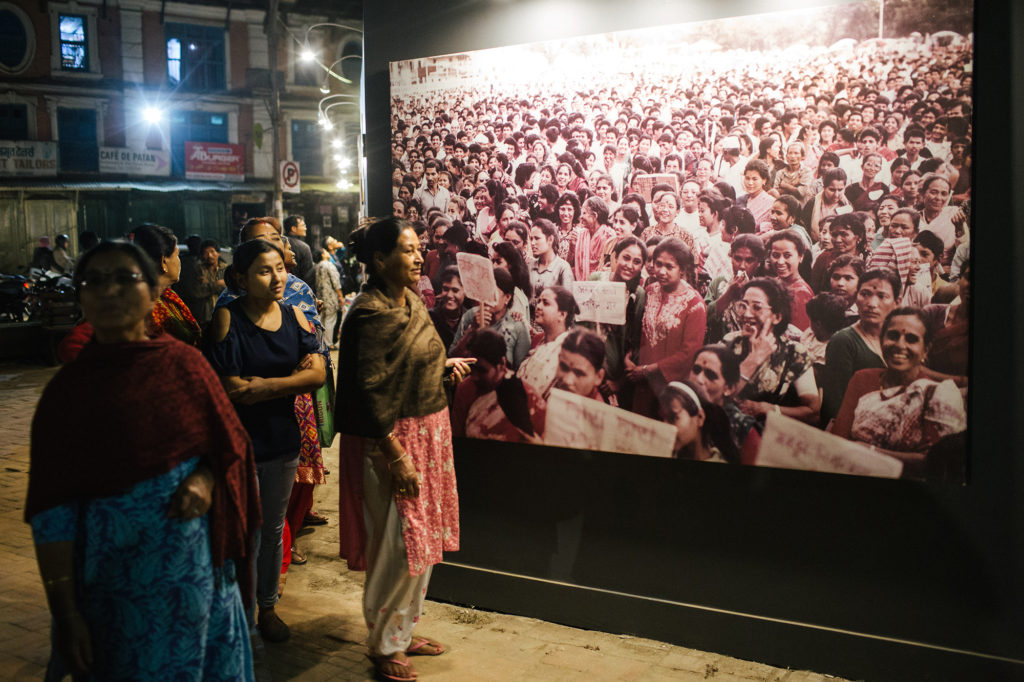
Courtesy the artist
What became increasingly evident through my conversations with these festival directors and curators was the need to focus on intellectual as well as community involvement in the time between festival editions. While the event itself may be a trigger, or a starting point, many engagements really take shape and form after the frenzy of the opening week subsides. The day The Lightning Testimonies closed after its six-month run at Photo Kathmandu, a new initiative called Imperfect Solidarities (IMSOL) was launched. Unwilling to give it a binding definition, and aligning with its fluid nature, Kakshapati described IMSOL as a methodology that relies on narrative psychotherapy tools to cultivate “nonjudgmental conversations” and an “opportunity to create time and space with people who you feel some kind of community with.” As an example of how an image-based work can serve as a prompt for larger, time-intensive conversations on issues that are plaguing society, this initiative helped foster knowledge-sharing beyond the presence of the work itself.
Chobi Mela perhaps has the longest experience with this kind of interdisciplinary exchange with photography, as well as with extending the concerns raised by the festival into the interim period between two editions. Two of the festival’s parent organizations—Drik and Pathshala—engage with civil society throughout the year, as in November 2019, when Drik organized an event on the necessity of prison reform, marking the anniversary of the release of its managing director, Shahidul Alam. Alam, who had been abducted and then jailed for criticizing the Bangladeshi government, shared his experience along with other previously incarcerated individuals. Wahab, when speaking about the future, emphatically says, “Shahidul is our logo, Shahidul is our flag,” while also admitting that the way forward for the medium is to “embrace its transformation.” With Chobi Mela, as well as other initiatives in the region, opening up their doors to cross-disciplinary practice as well as new forms of visual culture, Wahab’s words help root this transition to a purposeful intent—“the medium is only the tool or voice with which we want to question power.”
Read more about South Asian photography communities in Aperture, issue 243, “Delhi: Looking Out/Looking In” (Summer 2021).










